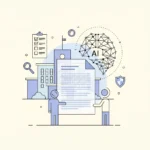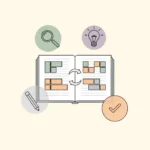# Storyboard
A **storyboard** is a detailed plan describing the content and structure of visual content, including key scenes, flow, and key messages. It serves as a visual blueprint for projects like films, animations, advertisements, presentations, and even user experience (UX) designs.
—
## What is a Storyboard?
At its core, a storyboard is a sequence of illustrations or images displayed in order to pre-visualize a motion picture, animation, motion graphic, or interactive media sequence. Think of it as a comic strip version of your project—each frame represents a significant moment or scene, accompanied by notes about dialogue, action, camera angles, and timing.
Storyboards bridge the gap between an abstract idea and its tangible execution. They allow creators to:
– **Plan the narrative flow** before production begins
– **Communicate vision** to team members and stakeholders
– **Identify potential issues** early in the creative process
– **Save time and resources** by reducing guesswork during production
—
## Key Components of a Storyboard
An effective storyboard typically includes several essential elements:
### 1. **Frames or Panels**
Individual boxes that represent distinct scenes or shots. Each frame captures a specific moment in the sequence.
### 2. **Visuals**
Sketches, illustrations, or even photographs showing what will appear on screen. These don’t need to be highly detailed—simple drawings often suffice to convey the idea.
### 3. **Scene Descriptions**
Written notes explaining what’s happening in each frame, including character actions, movements, and important visual elements.
### 4. **Dialogue and Narration**
Any spoken words, voiceovers, or sound effects that accompany the scene.
### 5. **Camera Directions**
Notes about camera angles, movements (pan, zoom, tilt), and transitions between scenes.
### 6. **Timing**
Approximate duration of each scene, helping to pace the overall project.
—
## Types of Storyboards
Different projects call for different storyboard styles:
### Traditional Storyboards
Hand-drawn or digitally illustrated frames arranged in sequence. Common in film and animation production.
### Thumbnail Storyboards
Quick, rough sketches used for early brainstorming and concept development. These are less detailed but faster to create.
### Digital Storyboards
Created using software like Adobe Photoshop, Storyboard Pro, or specialized apps. They offer more flexibility for revisions and can include color, shading, and effects.
### Animated Storyboards (Animatics)
These add motion and timing to static storyboard frames, creating a rough animated version of the final product.
—
## The Storyboarding Process
Creating a storyboard follows a structured workflow:
### Step 1: **Understand the Project**
Review the script, brief, or concept. Identify the key messages, target audience, and desired emotional impact.
### Step 2: **Break Down the Narrative**
Divide your story into scenes and shots. Determine which moments are most crucial to advancing the narrative or delivering your message.
### Step 3: **Sketch the Frames**
Begin drawing each scene. Focus on composition, character placement, and important visual elements. Don’t worry about artistic perfection—clarity is more important.
### Step 4: **Add Annotations**
Include notes about action, dialogue, camera movements, and timing. Be specific enough that anyone reading the storyboard can understand your vision.
### Step 5: **Review and Refine**
Share your storyboard with team members or stakeholders. Gather feedback and make necessary adjustments before moving to production.
—
## Why Storyboards Matter
### For Students and Emerging Creators
As a university student, mastering storyboarding offers several advantages:
– **Enhances visual communication skills** essential in media, design, and marketing careers
– **Develops critical thinking** about narrative structure and visual storytelling
– **Provides a portfolio piece** demonstrating pre-production planning abilities
– **Facilitates collaboration** in group projects by creating a shared visual reference
### In Professional Settings
Industry professionals rely on storyboards because they:
– **Align teams** around a unified vision
– **Reduce production costs** by preventing expensive mistakes
– **Speed up the approval process** with clients and executives
– **Serve as a reference point** throughout production
—
## Storyboards Beyond Film
While storyboards originated in animation and film, their applications have expanded significantly:
### UX/UI Design
Designers storyboard user journeys to visualize how people interact with websites, apps, and digital products.
### Marketing and Advertising
Agencies use storyboards to pitch campaign concepts and plan commercial shoots.
### Education
Teachers create storyboards for instructional videos and e-learning modules.
### Business Presentations
Professionals storyboard presentations to structure their message and visual aids effectively.
—
## Tools and Resources
Several tools can help you create professional storyboards:
**Free Options:**
– **Canva** – Offers storyboard templates
– **Storyboarder** – Open-source software by Wonder Unit
– **Boords** – Free tier available for simple projects
**Professional Software:**
– **Toon Boom Storyboard Pro** – Industry-standard for animation
– **Adobe Photoshop/Illustrator** – Versatile tools for custom storyboards
– **FrameForge** – 3D pre-visualization software
**Low-Tech Alternatives:**
– Pencil and paper
– Post-it notes
– Index cards with sketches
—
## Tips for Effective Storyboarding
1. **Start simple**: Don’t overthink the artwork. Stick figures can work perfectly fine if they communicate the idea clearly.
2. **Think in sequences**: Consider how one frame flows into the next. Smooth transitions make for better storytelling.
3. **Use arrows and annotations**: Show movement, character direction, and camera motion with simple symbols.
4. **Consider aspect ratio**: Match your frame proportions to your final output format (16:9 for video, 1:1 for social media, etc.).
5. **Iterate freely**: Storyboards are meant to be revised. Don’t be afraid to rework scenes that aren’t working.
6. **Get feedback early**: Share work-in-progress versions to catch issues before they become problems.
—
## Common Mistakes to Avoid
– **Overcomplicating drawings**: Remember, clarity trumps artistic skill
– **Neglecting continuity**: Ensure consistent character placement and scene geography
– **Forgetting the audience**: Always keep your target viewers in mind
– **Skipping annotations**: Visual alone might not convey your full intent
– **Rushing the process**: Proper planning during storyboarding saves time later
—
## Conclusion
Storyboards are indispensable tools for anyone involved in visual storytelling or content creation. Whether you’re a film student planning your thesis project, a marketing major developing campaign concepts, or simply someone interested in visual communication, learning to storyboard effectively will serve you throughout your academic and professional career.
By translating abstract ideas into concrete visual sequences, storyboards empower creators to refine their vision, communicate with collaborators, and ultimately bring better projects to life. As you develop your storyboarding skills, you’ll find that this planning process not only improves your final output but also deepens your understanding of how visual narratives work.
Start simple, practice regularly, and don’t be intimidated by the process. Every great film, animation, or campaign you’ve ever seen likely began with someone sketching out ideas on a storyboard—and now you have the knowledge to create your own.




Leave a Reply